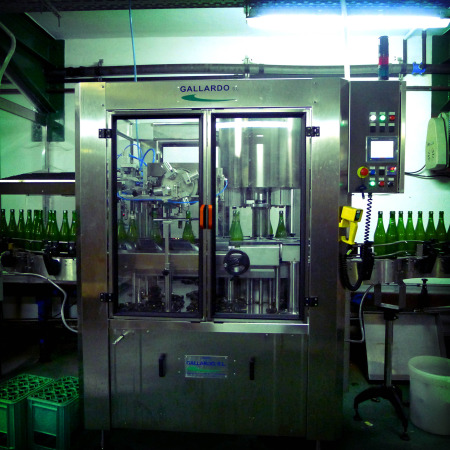making cider : zapiain sagardotegia, astigarraga
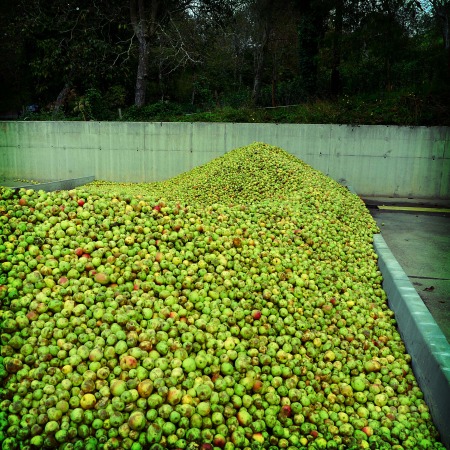
A month or so ago, a friend and cider guru invited me and another friend to come look around his cider house and get a behind-the-scenes glimpse of how he makes his cider, which is one of the most popular in the region.
I'd been there before, for a tasting (and as the token foreigner got to also embarrass myself on Basque television), and a couple times for the traditional Basque ciderhouse dinner. For those who aren't familiar, it's basically a huge steak, bacalao, tortilla, and a traditional dessert of nuts, cheese, and membrillo with all the cider you can drink.

This man is Egoitz Zapiain, and his family's business, Zapiain Sagardotegia, is a reference and a standard. They sell their cider everywhere, but you can also find them in the hands of the old-school Donostians. I.e., a classic. And with good reason-Egoitz takes special care with the creation of his cider AND with the people who come during txotx season, crafting an experience less for the alcohol-thirsty tourist and more for the cider aficionado. So we bypassed the empty dining room and moved straight to the action.
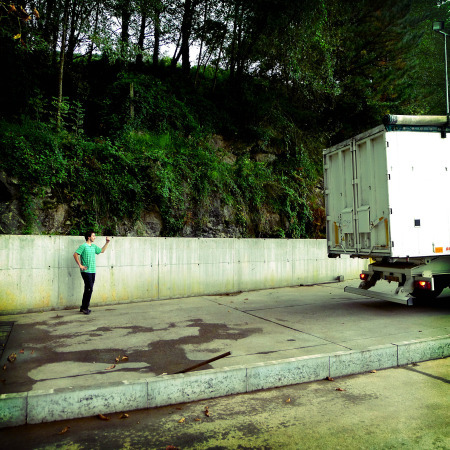
Apples arrived in a big old truck. Egoitz motioned them in, and the truck tilted back, dumping tons and TONS of apples everywhere. They are unloaded into a designated area, where concrete barriers about a foot tall keep them from rolling off into the hills of Basque Country. Then, water is pumped into this area in order to float the apples like cranberries. They waft down a little apple river to the belt that carries them up to QC, also known as Egoitz's aita (dad).
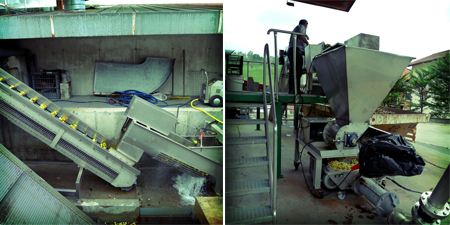
He works with his hands, overlooking Egoitz's aunt's restaurant, where that day she happened to be sitting on the porch staring right back, peeling beans. Sr. Zapiain throws the rotten apples into a bin, allowing the good ones to go on to be crushed, squeezed, and the juice to pass into separate metal barrels, depending on its qualities.
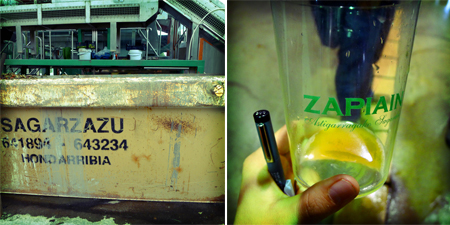
Egoitz makes an effort to begin the blending of the apples (some sweeter, some more tart) as soon as possible, rather than waiting until the final step and just mixing apple juice. This creates a more balanced cider. We tasted everything, starting with the juice, nearly fresh-squeezed. It wasn't sweet, it was tart. The sweetest apples are the ones from right around Astigarraga, but tarter apples are required to get the desired balance.
The apple orchards of the area are notoriously neglected. Egoitz cites the orchard across from his cider house, saying that the owner comes out twice a year: once to hunt, and once to harvest the apples. That's why, according to Egoitz, ciders made with apples only from the area are bonitas in theory but not always of high quality.
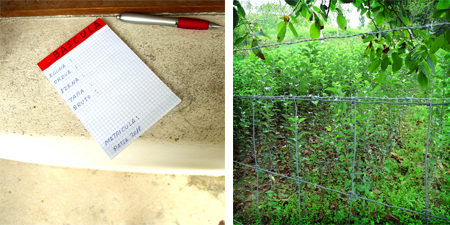
That's why, in an effort to move towards total control/self-sufficiency, Egoitz is doing some experiments with growing his own apple trees. The notepad you see above is the honor system for the local Basque farmers that come to take the refuse for animal feed and compost.
We moved on all the way to the cider from last season, the last to be made which was almost entirely bottled. It was complex, worlds away from where it had started. Cider, like txakoli, has come a long way from its humble beginnings.
